Agadir
We made three stops in Morocco – Agadir, Casablanca, and Tangier. All very interesting. The first stop, Agadir, has a population of about a million. They had a big earthquake in 1960 that wrecked the city and killed about a third of the population. So the main city was rebuilt. Here’s the Wall of Remembrance for the earthquake victims.
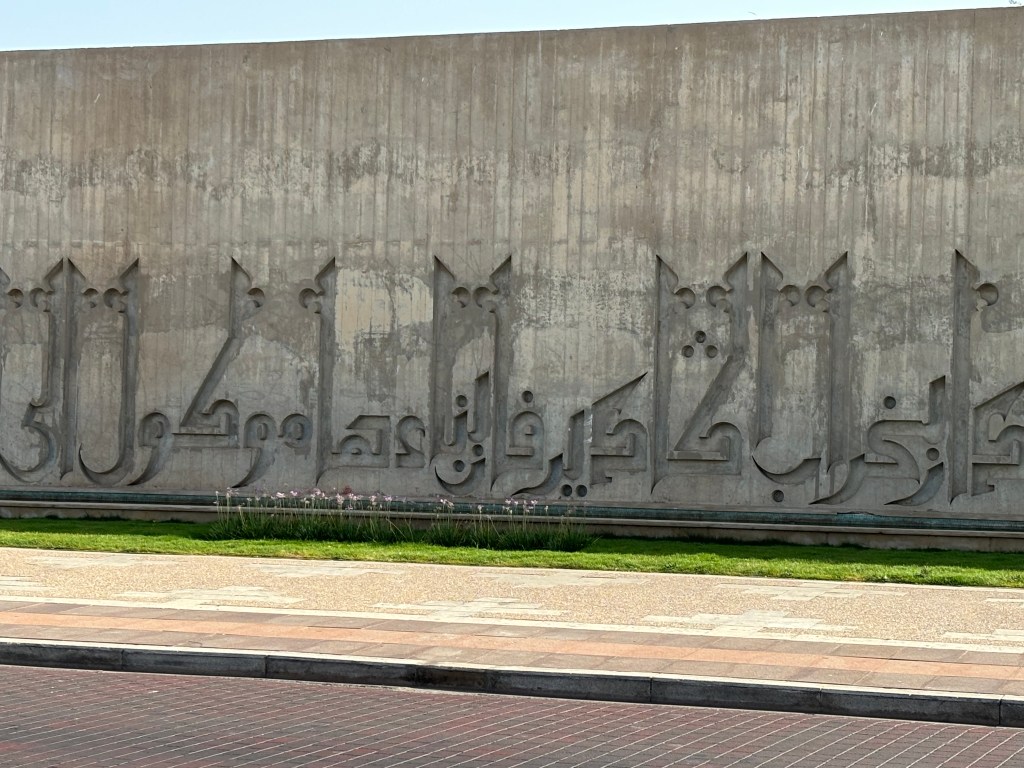
One building that survived the earthquake was the big fortress up on the hill above the town. We rode up a gondola to the fortress, aka the Kasbah.


We said “No thanks” to the camel ride option

Nice views of the town and beach from the Kasbah

Here’s a nice mosque in town. Morocco is 99% Muslim but seem to be very open to the handful of others in the country. And the Muslims here are relaxed about face and head coverings although most women had a head covering.


We visited a nice garden

Signage in Agadir includes three languages – Arabic, Tachelhit, and French. Tachelhit is a Berber language with roots in Greek and Hebrew and is spoken by more than half of the Moroccans. The Moroccan population has about 60% Berber heritage.


Wall construction in the garden was interesting – made from small pieces of granite.

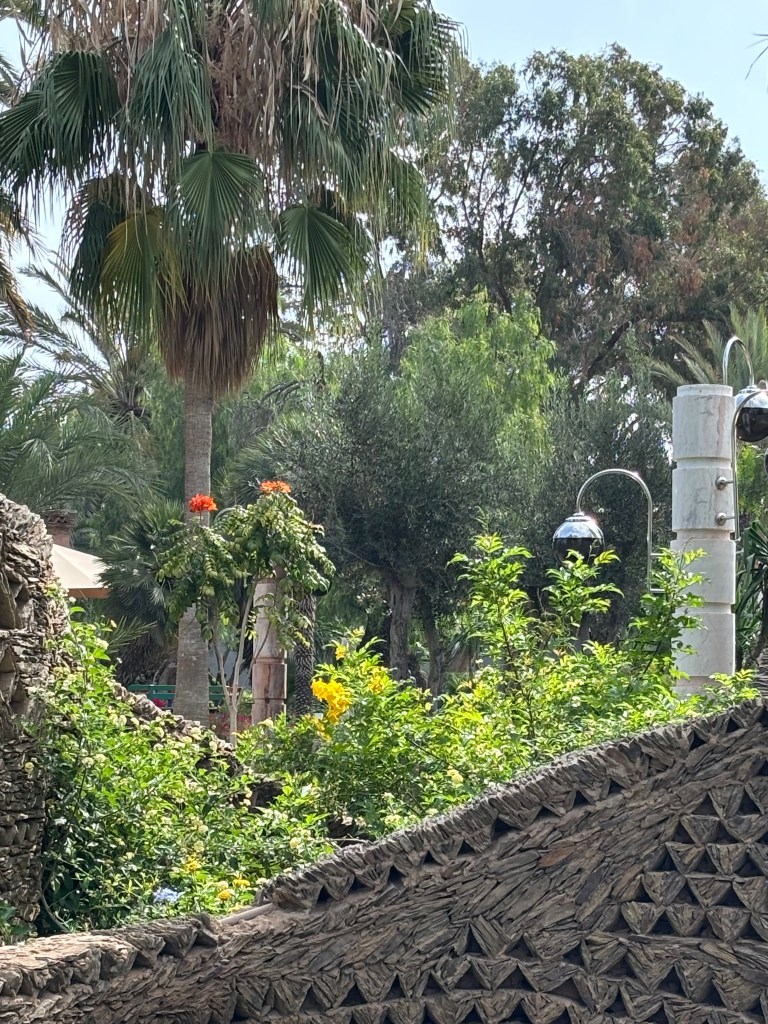
The other mosque that we visited in town had an impressive front door.

Our guide (you can call me “Stevie Wonder”) had a story about door knocker functions relative to male vs female visitors. He had us all singing “I just called to say I love you” for the end of the bus ride back to the ship.
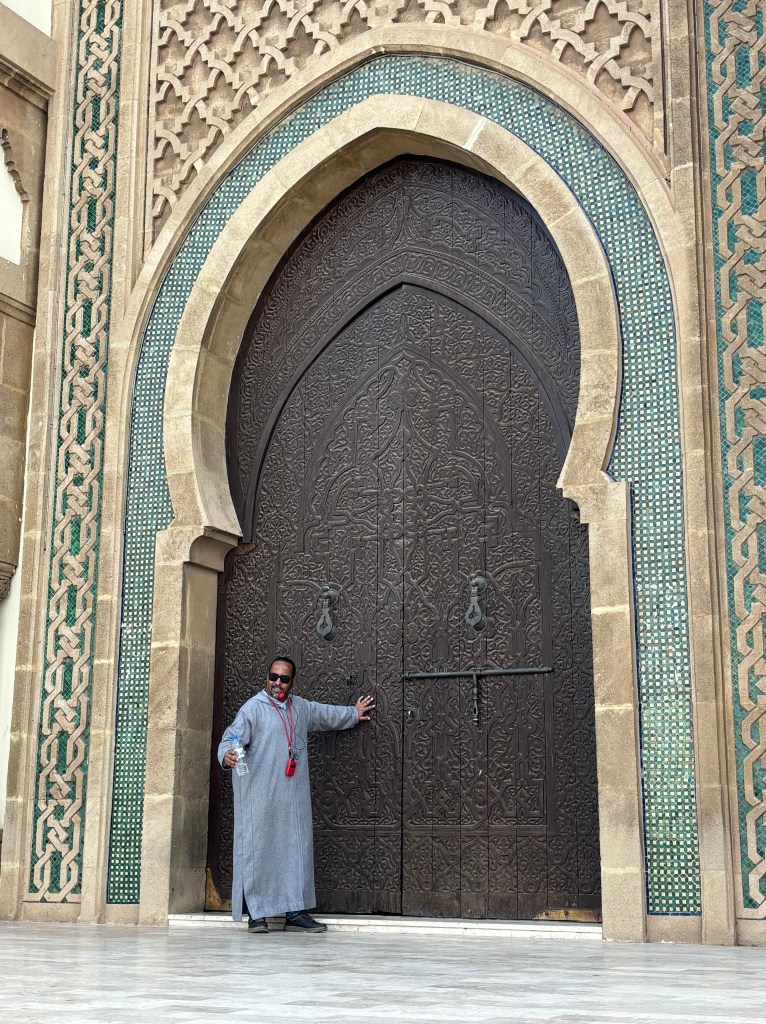
Casablanca
The next stop was Casablanca, population about 4.3 million. The 3rd biggest port in Africa after the big ones in Egypt and South Africa. Our city tour had us go by Rick’s Cafe which was just outside the port. They played a clip from the movie in our warm-up talk about Casablanca.
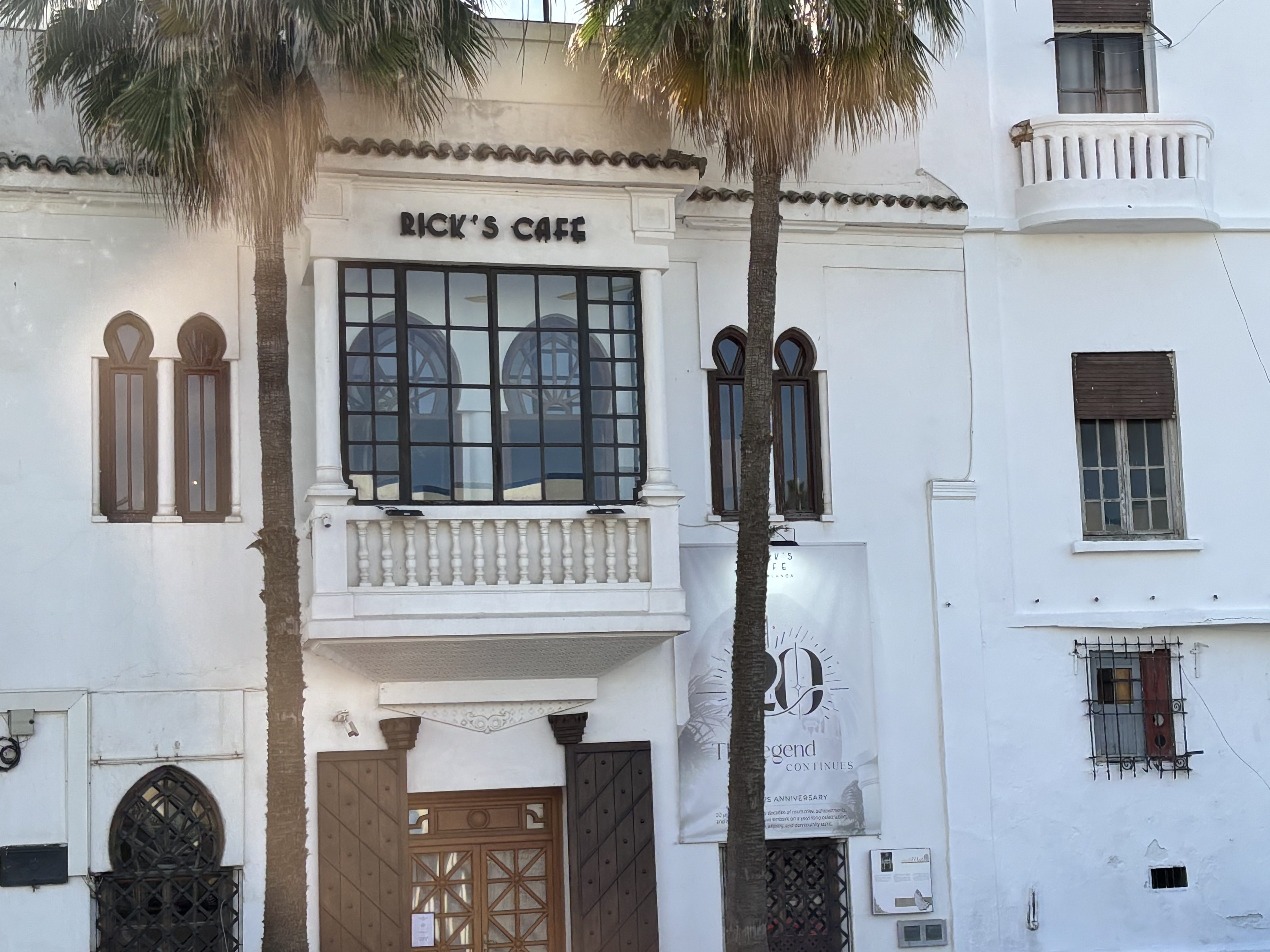
And then we’re off to the Hassan II Mosque, finished in 1993 with an estimated cost of $600 million. The tallest minaret in the world – high as a 60 story building.




Room for 25,000 worshippers inside plus another 80,000 outside in the square!
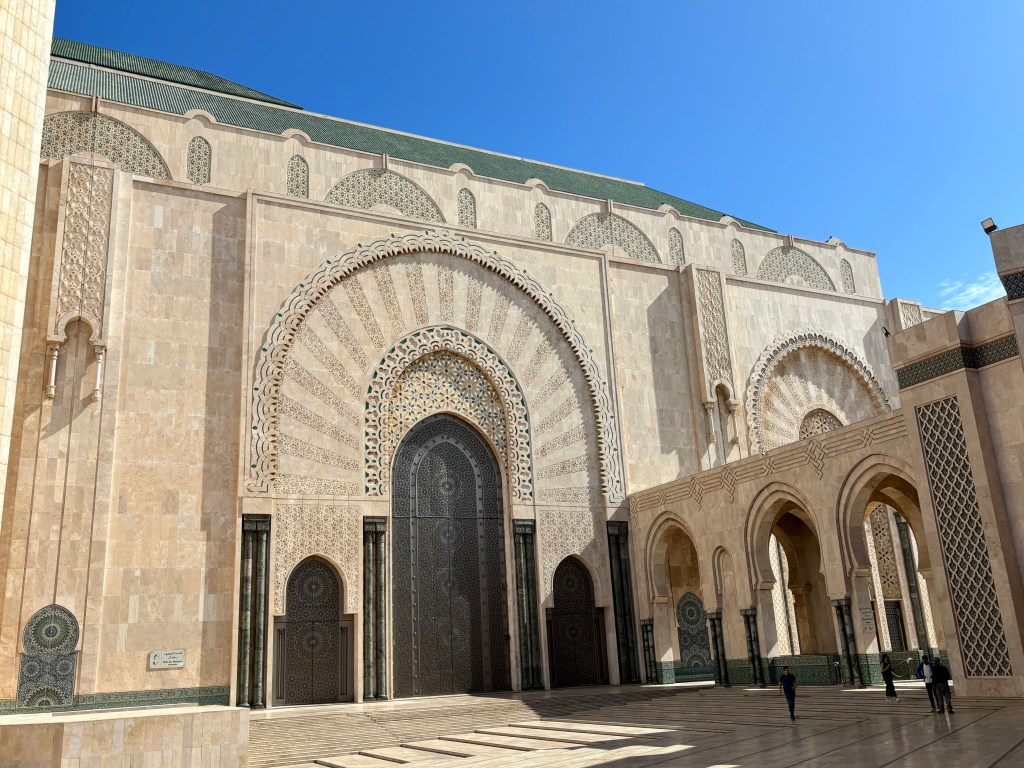


And then we visit a “cathedral” that the French managed to get built before they more or less left the country. Notre Dame de Lourdes


With nice stained glass windows


And then off to the royal palace. I guess the King has a palace in all of the big cities. Here’s the front door of one of them.

Our guide had a pleasant surprise to discover one of her cousins, who she didn’t recognize at first, was one of the palace guards. Worth a big hug.
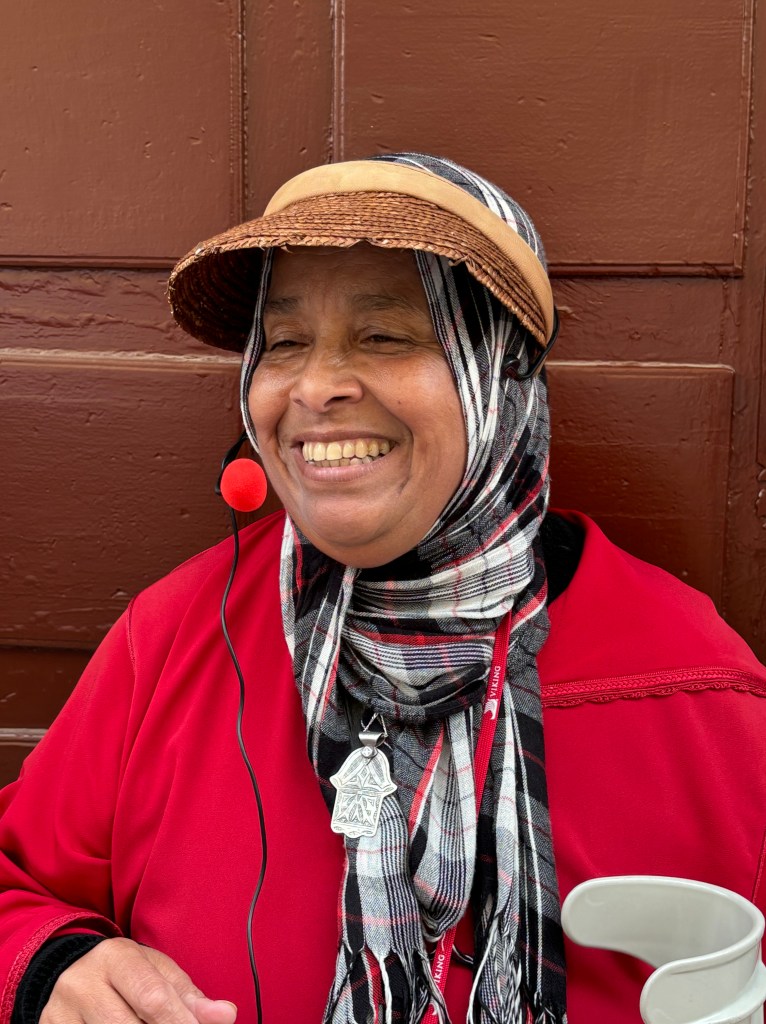
There are some very stylish doors in town.

And now we’re off to Tangier.

Tangier
Early in our tour of the city we get a look back at our ship with the Rock of Gibraltar in the background.

We cruised through various neighborhoods in town en route to the west side of the city where we took at look at the lighthouse at Cape Spartel – the point where ships turn south to get around Africa after coming out of the Mediterranean.
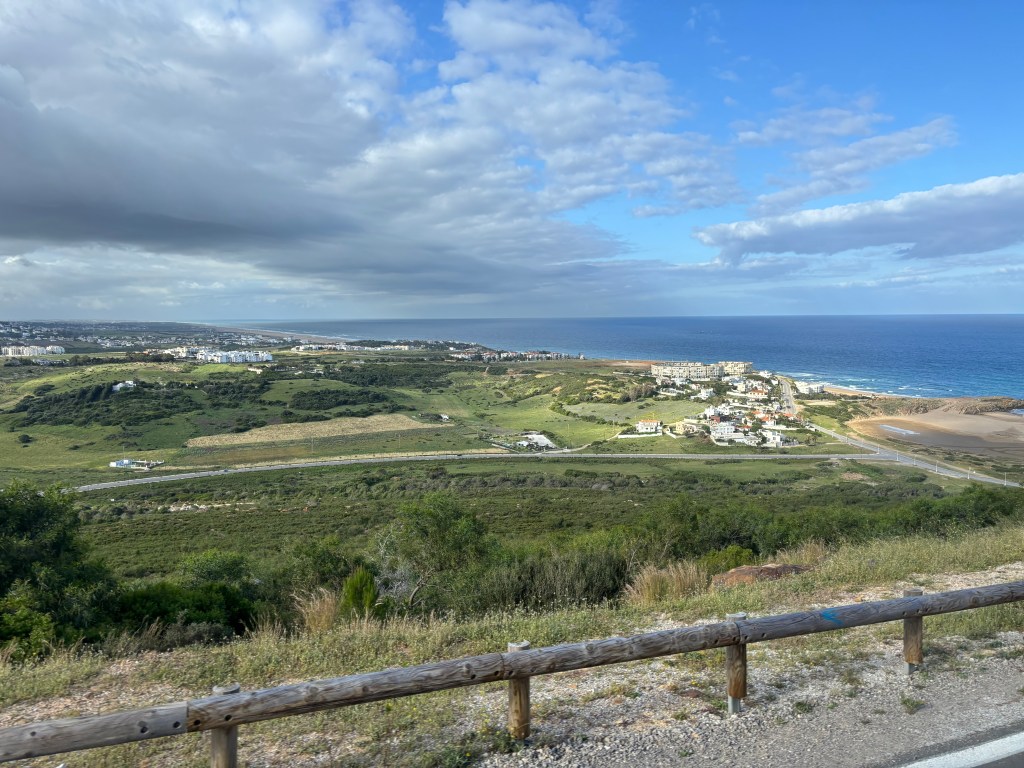

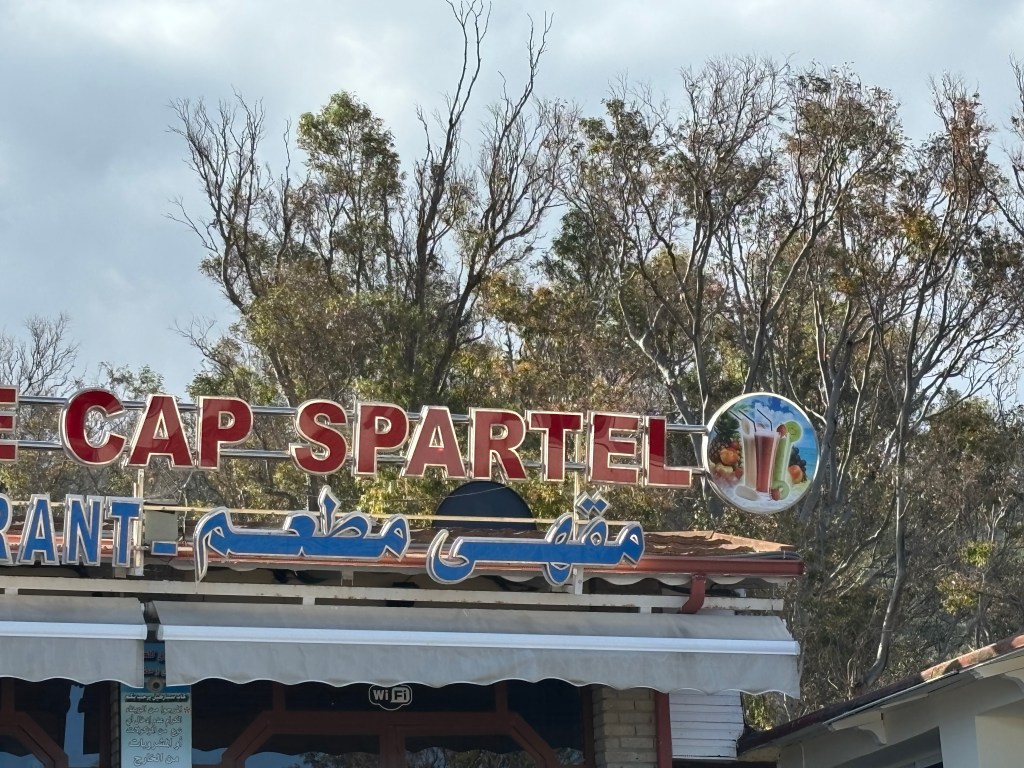
And said a quick hello to some camels as we headed to our next attraction.
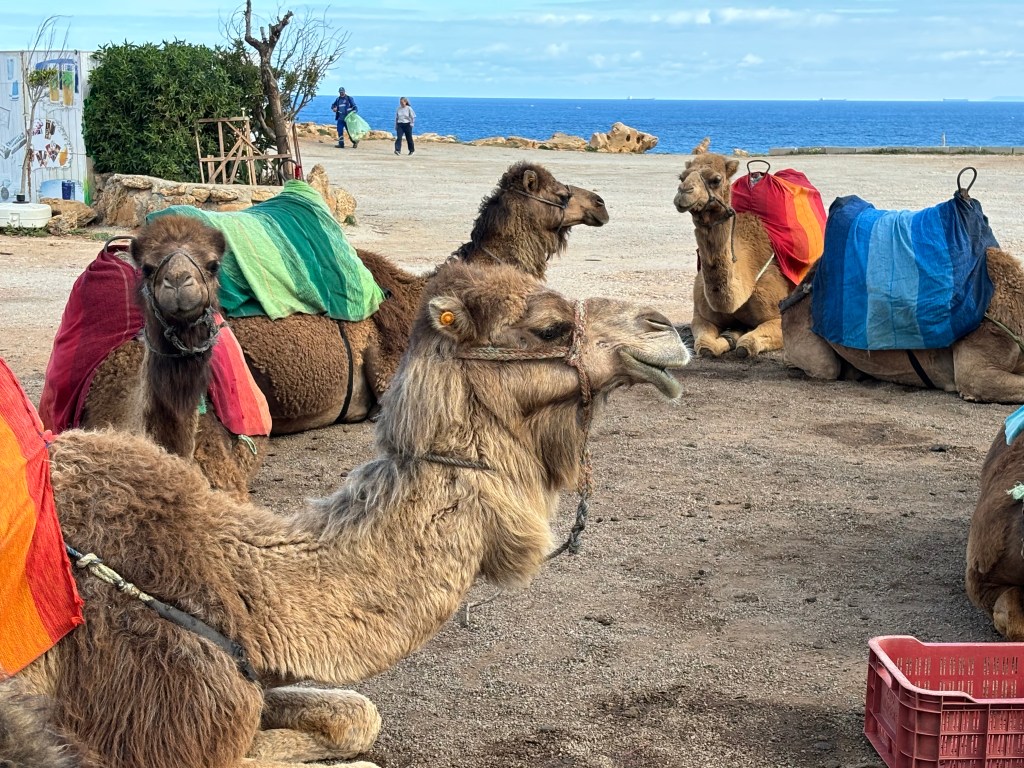
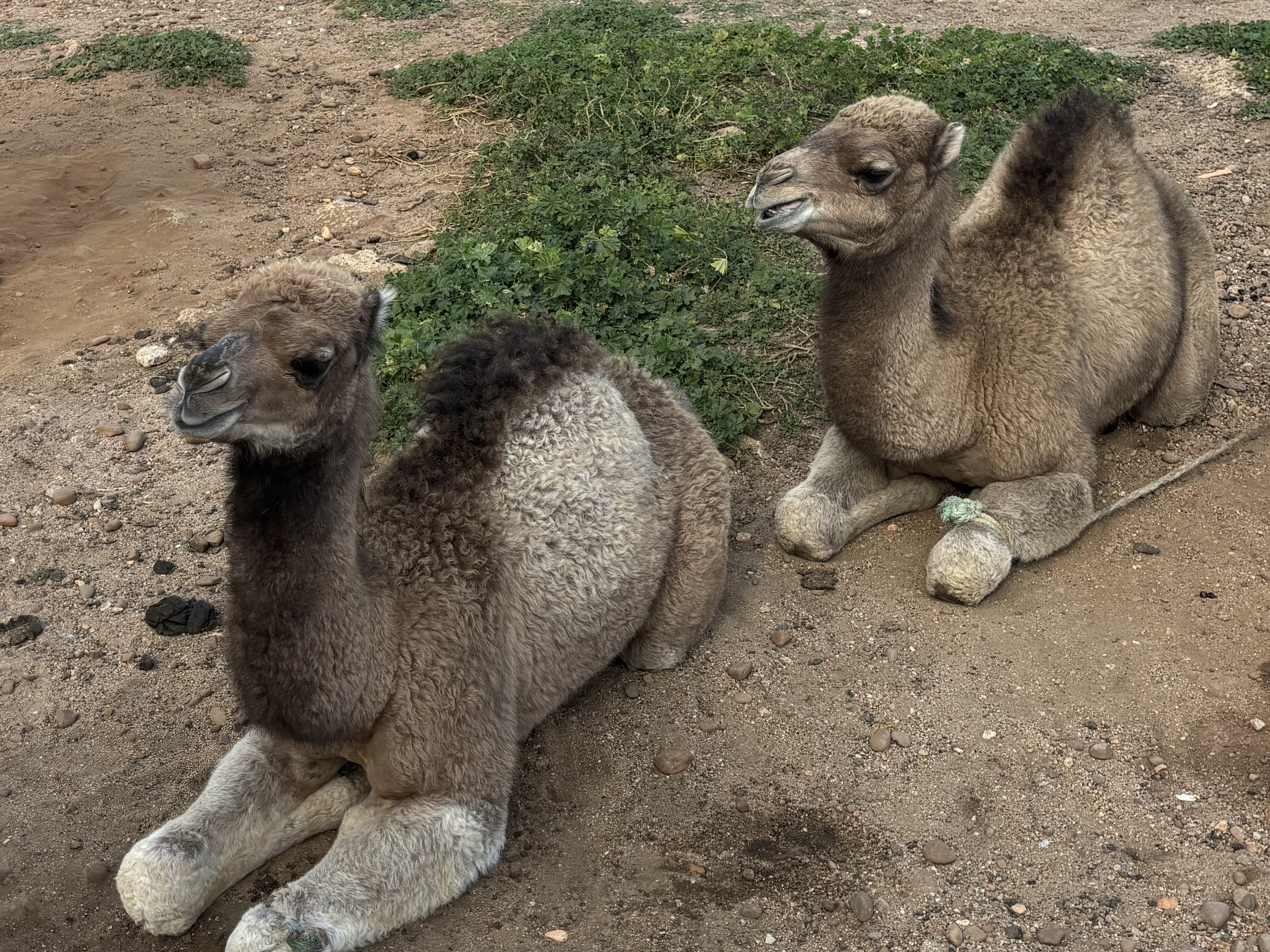
Next up is a visit to the Hercules Cave. Apparently this cave has been occupied by folks for many centuries. They would chip out circular stones from the limestone to use for grinding grain etc.




And then we head back to Tangier and visit St Andrews Church which is notable for serving all religions under one roof.

The altar has Muslim, Christian, Hindu and Jewish elements.

And now we enter “The Kasba” – the fortress on the hill

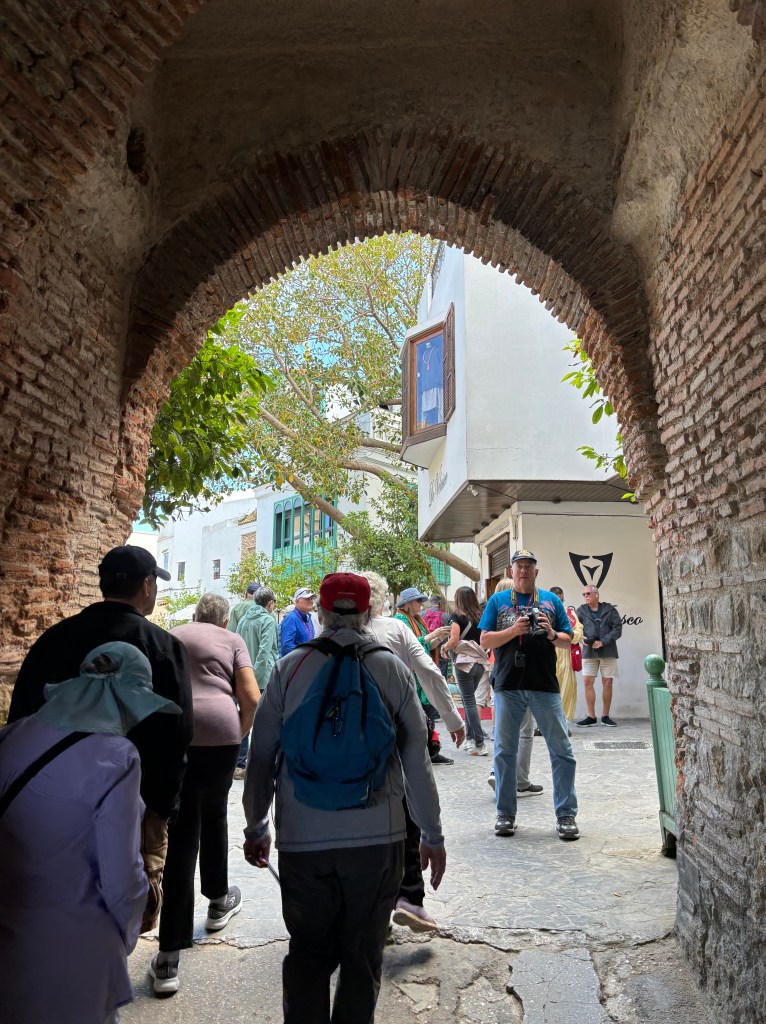


Lot’s of narrow streets, small shops, restaurants, street vendors, and handsome entry doors.




Tea and cookie break in this restaurant with view roof deck and fancy ceilings.


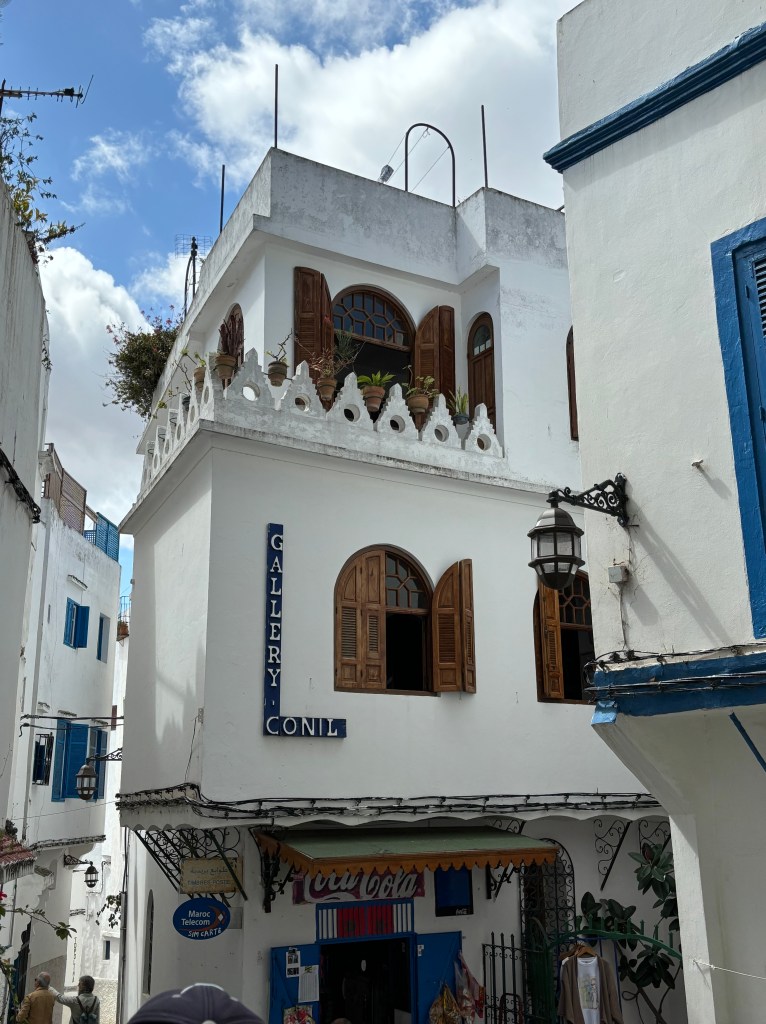
We make a stop at a shop selling Moroccan rugs and lots of antique Moroccan handicrafts. We got inspired to buy a nice antique vase which will be shipped to Suncadia for us to find a good landing spot.
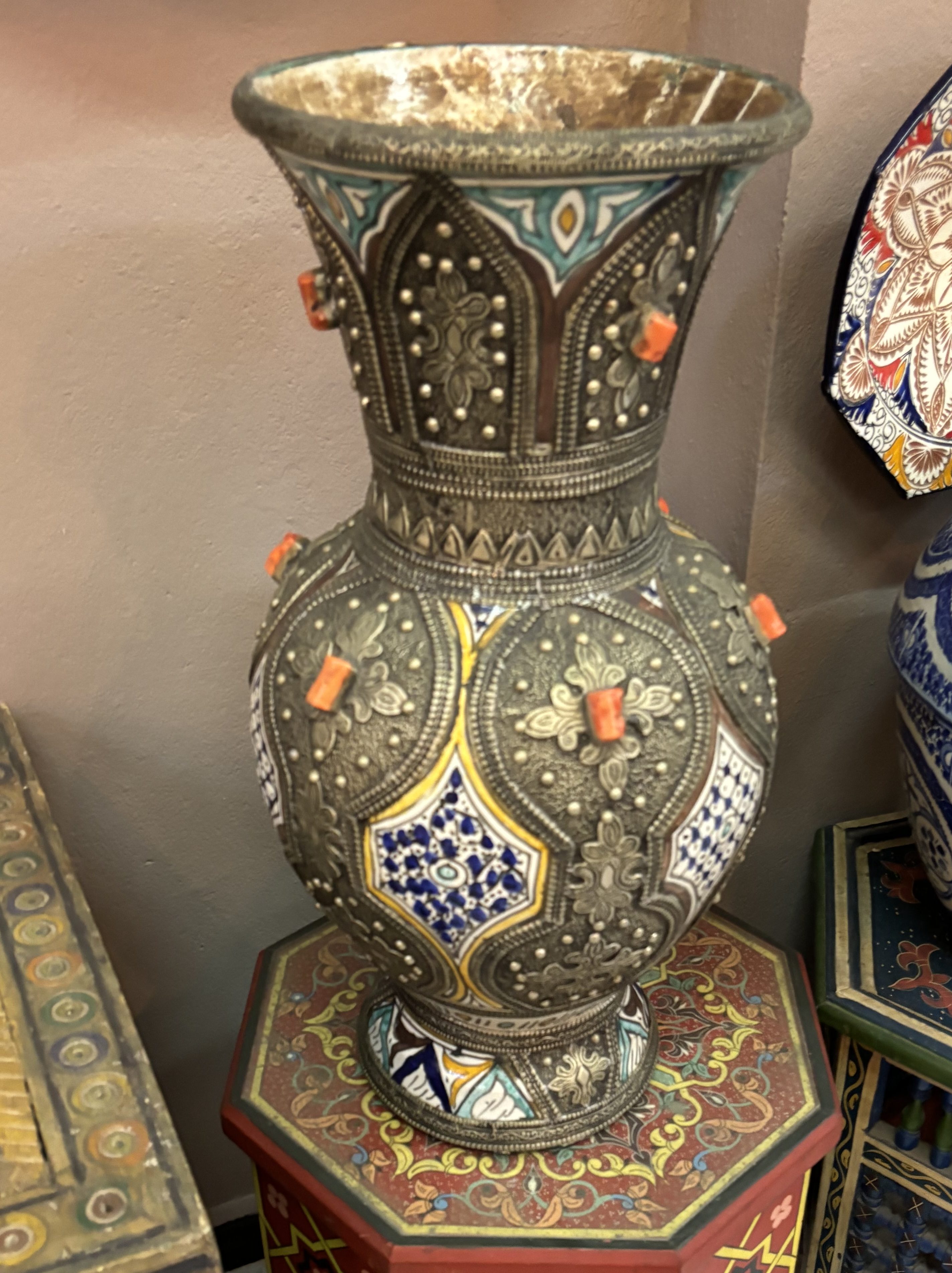
We exit down at the lower level. Our guide was hoping our tour would get over in time for him to make the afternoon prayers that the muezzins were calling for.
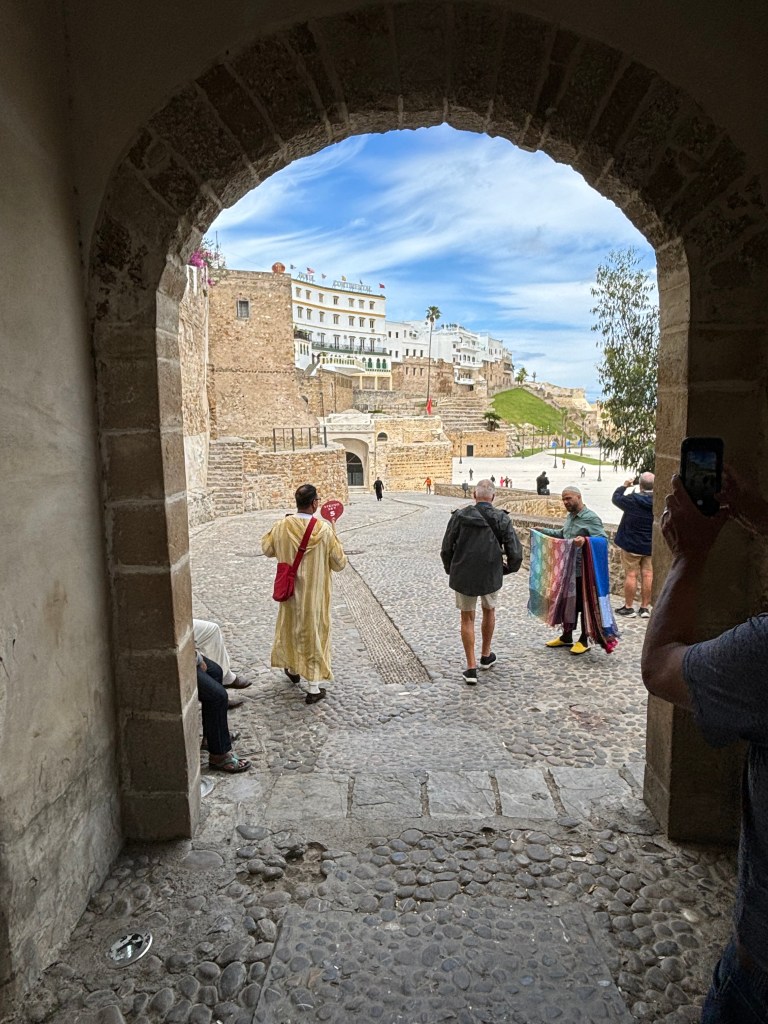
And that’s that for Morocco and Africa. Next stop is Lisbon and a Europe finale.